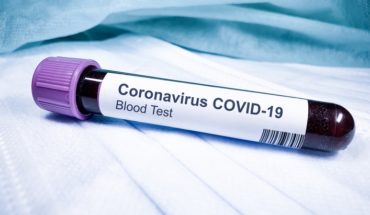Surgery: Pandemic Rehabilitation of Spine: In these pandemic times, one assumes that patients are prone to staying still and to staying isolated. Not so! My observation is that something happens, and there is a significant behavioural change. More and more, patients are anxious and worried about getting back to life and living. They want to feel better and get back to work to provide for their families. It is my observation that they take more risks and do more things to rehabilitate faster. Unfortunately, this can lead to pain and further surgery.
Abhishek’s story: Abhishek is an 80 years old orthopaedic surgeon who had a double level laminectomy performed. One week after spine surgery, he was doing quite well. Being a VIP, I visited him at home. Abhishek discussed that his spine surgery should be similar to the thousands of knee surgeries that he has performed, and rehabilitation should be started right away. I advised him that we are cautious with spine protocols, and even though we do not have the highest level of scientific rationale, we are careful with the experience of spine rehabilitation. He did not listen. He began to walk and ride bikes 3 to 4 hours a day. Two weeks later, he developed severe back pain and bilateral sciatica pain. A repeat MRI scan showed that the spinal nerves were irritated; however, there was no compression. So, he was on minimal activities for two more weeks, allowing the spinal elements to calm down. Abhishek is now fully recuperated and rehabilitated and doing all of his activities of daily living.
Billy Bob’s Story: Billy Bob is a 52-year-old entrepreneur who presented with a huge herniated disc. He was utterly debilitated and was unable to take a step to walk. So, we emergently decompressed his herniated lumbar disc, and he was immediately better. Billy told me that he is the owner of his construction company and that he is going back to work in a supervisory position one week after surgery. I advised him, and he agreed to use his brains only and not his hands. Unfortunately, he was the only employee of the company, and he worked nonstop for weeks. Unfortunately, his wound was irritated and became infected, and the infection became a deep infection spreading to the intervertebral disc and bone called discitis and osteomyelitis. Billy was treated with reoperation irrigation and debridement and eight weeks of antibiotics. He is tremendously better without an infection; however, he is rehabilitating slowly. He is ambulating and stationary biking now
Postoperative care after lumbar decompression surgery, in my hands, is performed with a definite protocol. Usually, the patient is allowed to walk for six weeks gently. Six weeks is necessary to heal the wound from inside and out. Yet still, the tissues and muscles are not yet reconstituted for strength and function. It takes another six weeks for strength and function. High-level activity such as return to sports can occur at eight weeks to longer than 12 weeks. High-level action needed for return to sports usually requires a particular protocol called lumbar stabilization. Lumbar stabilization strategies include learning good posture and strengthening in good posture. Return to work or contact sport typically occurs when the patient can do challenging manoeuvres such as the superman on a ball.
Superman on a ball technique of lumbar stabilization
My Postoperative Lumbar Decompression Protocol – A Unique Opportunity
I advise my patients:
Do not bend with your back.
A brace or a binder may be very supportive.
Walking, swimming, stationary biking, and elliptical cross-training should be helpful in moderation. Improve incrementally and progressively.
With distance, objects may weigh up to four times more to the spine, so keep lightweights close to your body.
The postoperative course is an extraordinary time and presents unique opportunities. For the first time in a long time, the patient experiences pain relief from the structural removal of a blockage in the spine. Patients are usually pleased with the speed with which they could wean themselves off of narcotics.
Besides having pain relief, patients find that there is free time for the first time in their life. With time and clearance from a doctor or physical therapist, many patients walk 3 to 5 miles a day.
Combined with a great diet, they lose excess weight and feel good about themselves.
Smoking: All patients scheduled for a fusion should stop smoking as far before the surgery as possible and continue to abstain during the postoperative period (until fusion heals 6–12 months). Studies show that smoking inhibits the formation of fusion bone.
Activity | Details | Time Benchmark |
Walking | Almost immediately, after surgery.First, with an assistant or physical therapist | 1 day |
Thinking Work | Discuss with surgeon | 1 week |
Stationary Biking | Slow first, incremental increase | 2 – 3 weeks |
Swimming | Slow first, incremental increase | 2 – 3 weeks |
Driving | When off of narcoticsand physically fit | 2 – 3 weeks |
Bending, Lifting, Twisting or Reaching in a controlled fashion | Discuss with surgeon -Always bend with the knees, never bend with the back | 6 weeks |
Physical Sex | Discuss with surgeon -Typically, patient is in a standing position | 6 weeks |
Physical Therapy | Discuss with surgeon. Lumbar Stabilization begins in 4 to 6 weeks. | 4 weeks – 3 months |
Physical Work | Discuss with surgeon. Completion of incremental lumbar stabilization | 6 weeks – 3 months |
Contact Sports | Discuss with surgeon. Completion of incremental lumbar stabilization | 6 weeks – 3 months |
- Surgery: Pandemic Rehabilitation of Spine - 9th November 2021







